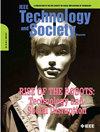在线毒性的技术解决方案:潜力与陷阱
IF 2.1
4区 工程技术
Q3 ENGINEERING, ELECTRICAL & ELECTRONIC
引用次数: 0
摘要
社交媒体平台具有令人困惑的两面性,它既是建立社区和归属感的场所,同时也会产生错误信息,助长和强化虚假宣传活动,并使现实世界中现有的歧视模式永久化。平台在减少社交媒体有害一面方面采取的第一步是识别和管理有毒内容。用户发布了大量帖子,必须对其进行快速评估。这是一个需要机器学习(ML)工具的应用环境,但正如我们在本文中详细介绍的那样,ML 方法依赖于人类注释者、分析师和版主。我们对现有方法和潜在改进的回顾表明,在不久的将来,人类和 ML 都无法脱离这一过程。不过,我们认为这些人类工作者的工作条件还有待改善。本文章由计算机程序翻译,如有差异,请以英文原文为准。
Technological Solutions to Online Toxicity: Potential and Pitfalls
Social media platforms present a perplexing duality, acting at once as sites to build community and a sense of belonging, while also giving rise to misinformation, facilitating and intensifying disinformation campaigns and perpetuating existing patterns of discrimination from the physical world. The first-step platforms take in mitigating the harmful side of social media involves identifying and managing toxic content. Users produce an enormous volume of posts which must be evaluated very quickly. This is an application context that requires machine-learning (ML) tools, but as we detail in this article, ML approaches rely on human annotators, analysts, and moderators. Our review of existing methods and potential improvements indicates that neither humans nor ML can be removed from this process in the near future. However, we see room for improvement in the working conditions of these human workers.
求助全文
通过发布文献求助,成功后即可免费获取论文全文。
去求助
来源期刊

IEEE Technology and Society Magazine
工程技术-工程:电子与电气
CiteScore
3.00
自引率
13.60%
发文量
72
审稿时长
>12 weeks
期刊介绍:
IEEE Technology and Society Magazine invites feature articles (refereed), special articles, and commentaries on topics within the scope of the IEEE Society on Social Implications of Technology, in the broad areas of social implications of electrotechnology, history of electrotechnology, and engineering ethics.
 求助内容:
求助内容: 应助结果提醒方式:
应助结果提醒方式:


